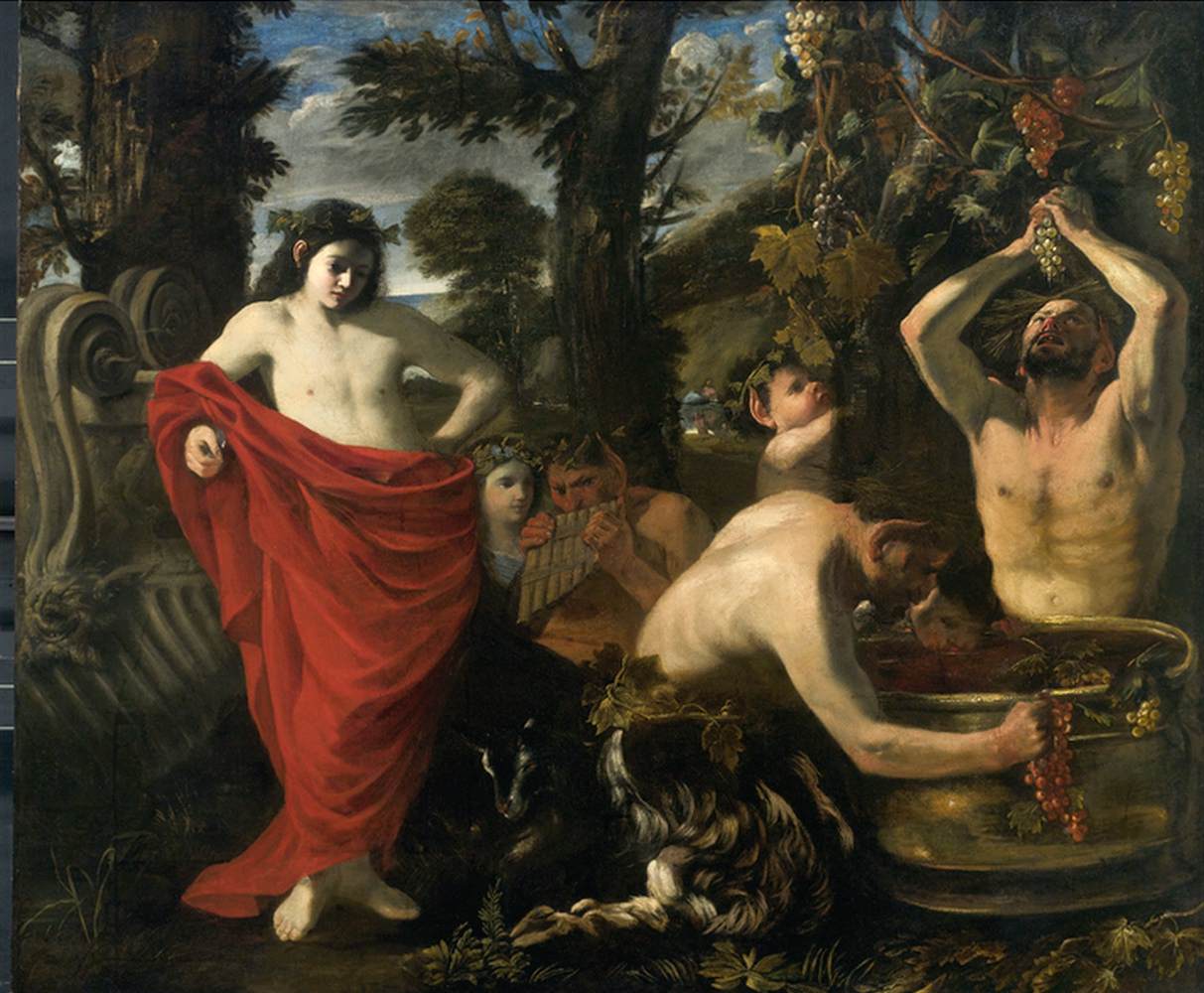Description
The painting Bacchus Overseeing the Crushing of Grapes by His Satyrs by Italian artist Pier Francesco Mola is an impressive work that captures the essence of the mythological world of ancient Greece and Rome. The large painting measures 195 x 232 cm and is currently in the Louvre Museum in Paris.
Mola's artistic style is distinctly Baroque, with an emphasis on emotion and movement. The composition is dynamic, with energetic figures and a sense of movement throughout. Bacchus, the god of wine and drunkenness, stands in the center of the painting, surrounded by his satyrs, who are crushing grapes to make wine. Bacchus is in a commanding position, with an ecstatic expression on his face and a scepter in his right hand.
The use of color in the painting is vibrant and exuberant, with rich shades of red, gold and green blending together to create a sense of opulence and richness. The details in the painting are impressive, from the textures of the leaves and grapes to the folds in the characters' clothing.
The story behind the painting is interesting. It was commissioned by Cardinal Flavio Chigi in the 17th century for his palace in Rome. The painting represents the celebration of wine and drunkenness, something that was very important in the Italian culture of the time. However, the painting also has a moral message, as Bacchus, while a god, is also a symbol of overindulgence and a lack of self-control.
An interesting and little-known aspect of the painting is that Mola worked on it for several years, suggesting that it was a very important project for him. It is also known that Mola was a highly respected artist in his time and that his works were highly valued by collectors and patrons of the time.
In conclusion, the painting Bacchus Overseeing the Crushing of Grapes by His Satyrs by Pier Francesco Mola is an impressive work that combines mythology, history, and morality in one vibrant and exciting composition. Its baroque style and its use of color and detail make it a truly impressive and admirable work of art.

